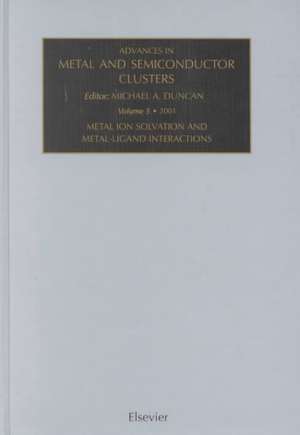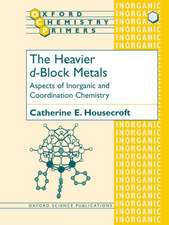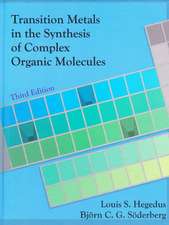Advances in Metal and Semiconductor Clusters: Metal Ion Solvation and Metal-Ligand Interactions: Advances in Metal and Semiconductor Clusters, cartea 5
Autor M.A. Duncanen Limba Engleză Hardback – 9 iul 2001
Preț: 1093.54 lei
Preț vechi: 1498.00 lei
-27% Nou
Puncte Express: 1640
Preț estimativ în valută:
209.28€ • 217.68$ • 172.77£
209.28€ • 217.68$ • 172.77£
Carte tipărită la comandă
Livrare economică 15-29 aprilie
Preluare comenzi: 021 569.72.76
Specificații
ISBN-13: 9780444507266
ISBN-10: 0444507264
Pagini: 412
Dimensiuni: 156 x 234 x 24 mm
Greutate: 0.76 kg
Editura: ELSEVIER SCIENCE
Seria Advances in Metal and Semiconductor Clusters
ISBN-10: 0444507264
Pagini: 412
Dimensiuni: 156 x 234 x 24 mm
Greutate: 0.76 kg
Editura: ELSEVIER SCIENCE
Seria Advances in Metal and Semiconductor Clusters
Cuprins
Solvation of sodium atom and aggregates in ammonia clusters. Electronic and geometric structures of water cluster complexes with a group 1 metal atom: electron-hydrogen bond in the OH{e}HO structure. Determination of sequential metal ion-ligand binding energies by gas phase equilibria and theoretical calculations: application of results to biochemical processes. Doubly charged transition metal complexes in the gas phase. Microsolvation of coordinated divalent transition-metal ions: establishing a spectroscopic connection with the condensed phase. Zero electron kinetic energy photoelectron spectra of metal clusters and complexes. Stability, structure and optical properties of metal ion-doped noble gas clusters. Photodissociation spectroscopy as a probe of molecular dynamics: metal ion-ethylene interactions. Solvated metal ions and ion clusters, and the effect of ligands upon their reactivity. Transition metal monohydrides. The binding in neutral and cationic 3d and 4d transition-metal monoxides and sulfides.











